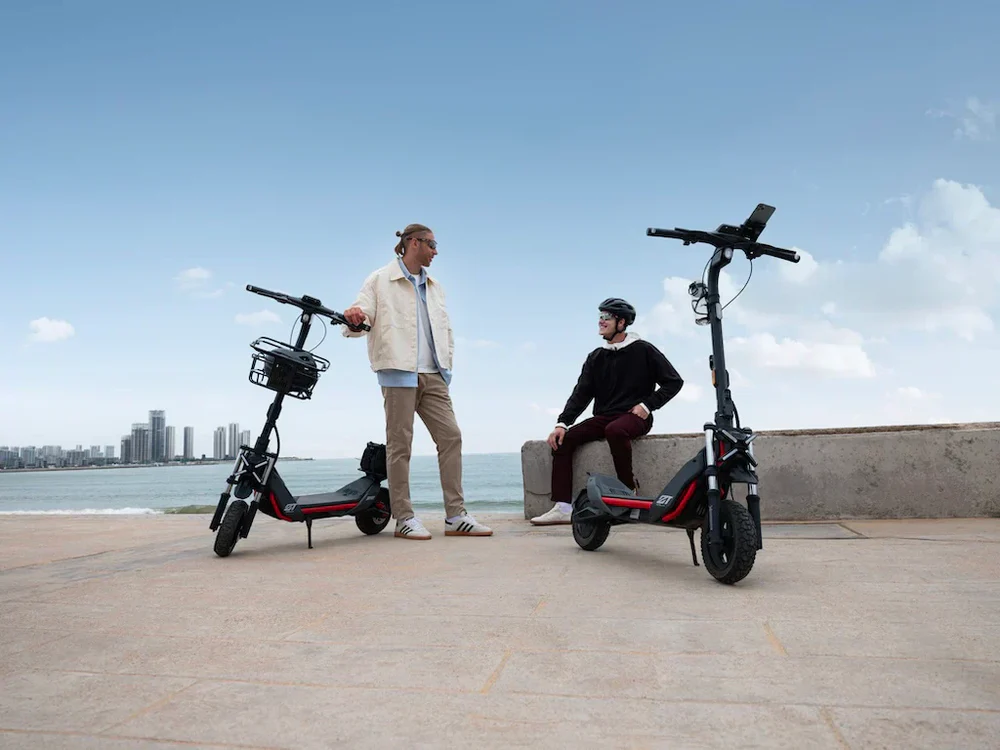Riding an electric scooter is fun, convenient, and eco-friendly. But what happens when your scooter suddenly won’t start, the brakes squeak, or the battery drains too quickly? These are common problems every scooter owner faces at some point. Regular maintenance and knowing some quick fixes can save you time, money, and frustration. In this guide, we’ll explore practical tips, solutions, and preventive measures to keep your electric scooter running smoothly.
Common Electric Scooter Issues and Their Causes
Understanding why problems happen is the first step toward fixing them. Here are some common electric scooter issues and their usual causes:
- Battery Draining Quickly: Batteries may lose charge faster due to overcharging, using a non-compatible charger, or old age. Cold weather can also affect battery performance.
- Motor Noise or Failure: Motors may make unusual noises if dirt gets trapped, bearings wear out, or internal components are damaged.
- Brake Problems: Squeaky or unresponsive brakes are often caused by worn pads, misalignment, or accumulated dust and grime.
- Loose Bolts and Wobbly Handlebars: Vibrations from riding can loosen screws and bolts over time. The folding mechanism can also develop play if not properly tightened.
- Tire Issues: Flat tires, punctures, or uneven wear can affect ride quality and safety.
Which of these issues do you encounter most on your rides? Knowing what’s normal and what needs attention can make maintenance easier.
Quick Fixes and Solutions
Keeping your scooter clean and well-maintained is essential for performance and longevity. Here are some tried-and-tested solutions:
Cleaning Your Scooter
Dust, dirt, and mud can accumulate quickly, especially if you ride through trails or construction zones. Use a microfiber cloth or wet wipes to wipe down the deck, frame, and handlebars. For tires and grooves, a soft brush or compressed air works well. Avoid soaking your scooter in water, as this can damage electrical components.
Battery Troubleshooting
If your battery drains quickly, try recalibrating it by fully charging and then discharging it completely. Always use the charger that came with your scooter, and avoid overcharging. Keep batteries at room temperature whenever possible, and check for swelling or leaks.
Motor and Brake Maintenance
Inspect the motor for debris and ensure it spins freely. Lubricate moving parts with appropriate grease or silicone-based sprays, but avoid getting lubricant inside the motor. Check brake pads for wear and adjust the alignment if necessary. If brakes are squeaky, clean them with isopropyl alcohol or a gentle brake cleaner.
Tire Care
Check tire pressure regularly and inflate to the recommended PSI. Small punctures can be patched at home with repair kits. Replace tires that show significant wear or damage to ensure safe riding.
Do you prefer cleaning with a microfiber cloth or using compressed air? Trying both methods can help you find the easiest routine for your scooter.
Preventive Maintenance Tips
Preventive care keeps your scooter in top shape and reduces the risk of unexpected breakdowns. Consider these tips:
Preventive maintenance is essential to keep your electric scooter in top shape and avoid unexpected breakdowns. Regular weekly checks, such as wiping down the scooter, inspecting tire pressure, and ensuring bolts are tight, can prevent minor issues from turning into major problems. Monthly inspections are also important, including examining the battery, motor, brakes, and folding mechanism, while tightening screws and lubricating moving parts as needed. Proper storage plays a key role in longevity—keeping your scooter indoors, away from moisture and extreme temperatures, helps protect its components. For long-term storage, partially charging the battery can prevent degradation. Seasonal considerations matter too; during winter, avoid riding in snow or salt, as these conditions can damage the frame and electrical parts.
Sharing preventive maintenance routines with fellow riders can uncover new tips and tricks you might not have considered.
Step-by-Step Troubleshooting Guides
Here’s how to approach common scooter problems before heading to a service center:
Battery Issues
- Remove the battery (if possible) and inspect for damage.
- Charge fully using the original charger.
- Perform a full discharge and recharge cycle.
- Replace the battery if performance doesn’t improve.
Motor and Brakes
- Clean the motor housing and check for debris.
- Inspect bearings and brushes for wear.
- Lubricate moving parts carefully.
- Adjust brake alignment and clean pads as needed.
Tires and Wheels
- Check tire pressure and inflate accordingly.
- Inspect for punctures, cracks, or uneven wear.
- Patch small punctures or replace tires when necessary.
Have you ever fixed a scooter problem at home without professional help? Following these steps can save both time and money.
Conclusion
Regular maintenance and prompt troubleshooting are key to enjoying your electric scooter without unexpected problems. By cleaning it, checking tires and brakes, monitoring battery health, and performing preventive inspections, you can extend the life of your scooter and ensure safer rides.
What’s your go-to maintenance routine? Share your tips and tricks in the comments, and subscribe to our newsletter for more electric scooter guides, troubleshooting advice, and expert tips. Keep your rides smooth, safe, and enjoyable!

